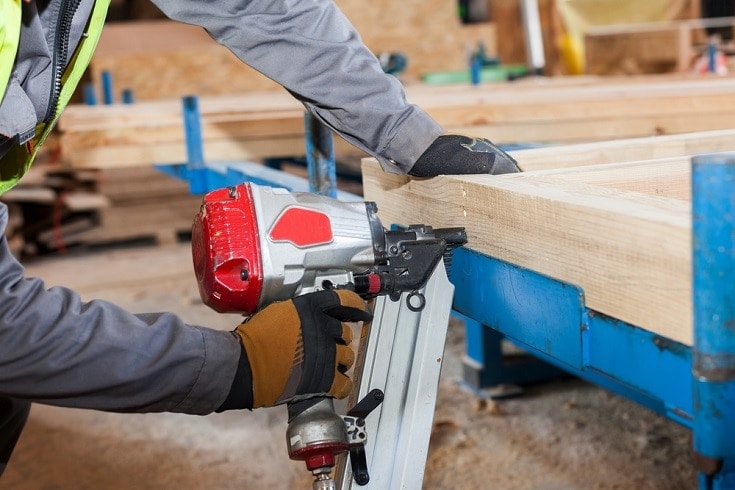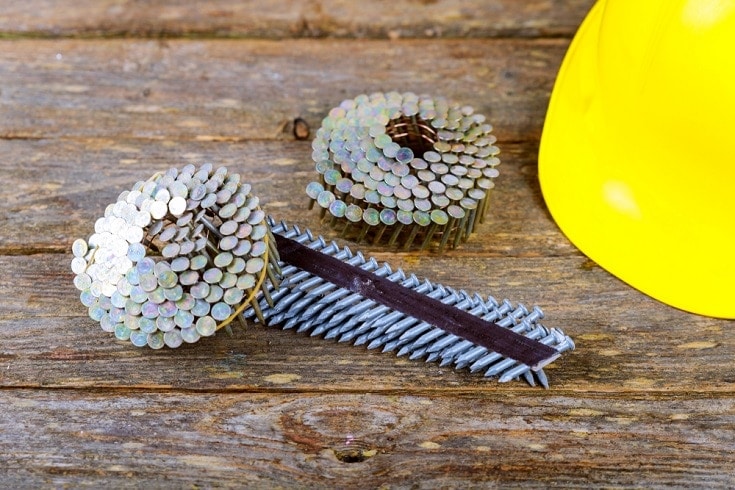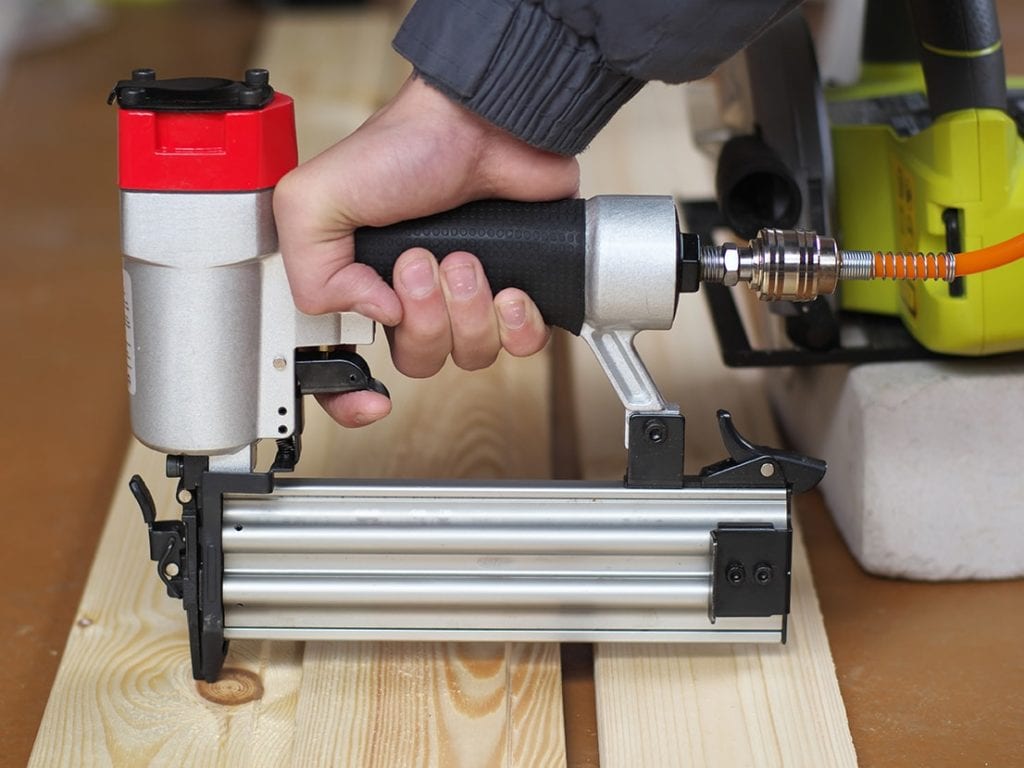How a Framing Nailer Works and How to Use One
-
- Last updated:


A framing nailer goes by many names. Some people call it a framing gun and others call it a nail gun. But we all agree on what this tool does: drive nails in with more speed and efficiency than the average handyman.
However, a surprising number of handymen don’t really know how a framing nailer works or how to use one. That’s why we whipped together this complete guide to explain how everything works.
By the time you finish this guide, you’ll be ready to use your framing nailer as an expert!

Different Types of Framing Nailers
The first thing you should know about framing nailers is that there are different options available. But they all fall under two categories: pneumatic and cordless.
- A pneumatic nailer uses air from an air compressor for power. The air helps power a piston and drive the nail into the wood with great speed.
- A cordless nailer is also powered by air, but the air in question comes from a disposable container inside the nailer. The container and battery help drive nails into the wood, but you’ll only be able to drive so many before you need to replace the container altogether.
Which one is better? It all depends on who you ask. Pneumatic nailers usually work faster and more efficiently, but many handymen do not have the space or the equipment to take advantage of it.
While cordless nailers do require you to replace the disposable container, they are ultimately more convenient for most people to use.
Nails and Nail Storage
Just as there are different types of frame nailers, there are different types of nails and methods to store them. Exactly which method you choose mostly comes down to personal preference.
For example, some nail guns store nails in a magazine in the form of “sticks.” Other nail guns coil the nails within a round magazine.
The exact nails you use can affect frame nailer performance and how many nails you can store in the magazine. You can usually fit more clipped-head nails inside of a magazine, but keep in mind there may be local regulations against clipped-head nails, especially for commercial work.

Using a Framing Nailer: The Basics
So far, our guide has focused on what a frame nailer is and what its different parts are. But here’s the fun part: how to start using it!
First, you’ll need to place the nailer tip against the wood. If you don’t do so, it will not be able to fire!
Second, you need to perfectly align the tip and the cylinder above the tip in the direction you wish to fire. This ensures precision and accuracy.
Third, and finally, all you have to do is pull the trigger! And you may want to inspect the nail afterward to see if it went in far enough. If not, you can always adjust the depth on your frame nailer before you pull the trigger again.
Know Your Triggers
Speaking of triggers, did you know that most frame nailers have two interchangeable trigger designs? Which one you use mostly comes down to the kind of work you’ve got ahead of you.
The single fire trigger lives up to its name. It requires you to place the tip against the wood before every single shot that you fire.
The bump fire trigger also lives up to its name, allowing you to simply bump the wood to fire a nail. As you might imagine, bump firing allows you to fire more nails in a shorter amount of time. But depending on your preferences, you may instead want the control that comes from a single fire trigger.
Styles of Nailing
Just as there is more than one way to skin a cat, there is more than one way to drive your nails in. As usual, the method you go with is a matter of the project in front of you as well as your personal preferences.
The first method is called “through nailing,” and it is straightforward: you simply drive the nail square through the board face and into another. Another option is to drive it perpendicular instead of square.
The second method is more advanced and known as toe-nailing. In toe-nailing, you drive the nail in at a special angle that can keep wood from splitting or keep the nail from showing.
It’s possible to stick with through nailing your entire life. Over time, though, you may wish to master toe-nailing for more complex projects.


Staying Safe During Use
At the end of the day, a framing nailer is a device that helps you fire nails through wood at high speed. That’s why it’s important to wear the right safety gear for the occasion!
Safety glasses can protect your eyes from any wayward nails or splinters of wood. And hearing protection can help safeguard your ears against this very loud tool. Finally, you’ll want to wear clothing that offers comfort and flexibility while still being thick enough to protect you.
Of course, the biggest safety tip of all is paying close attention to what you are doing. If you can concentrate on the hundredth nail with the same intensity you concentrated on the first nail, you’ll be a framing nailer master in no time!
Now that you’ve completed this guide, you should be ready to select a good framing nailer and get right to work!
See Also:
Featured Image Credit: brizmaker, Shutterstock
Contents

